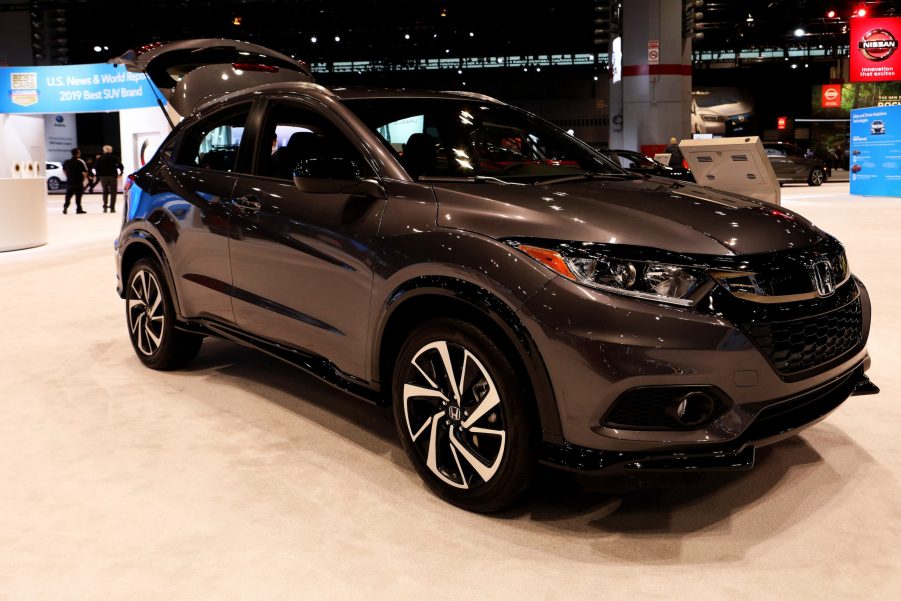
Performance Is Where the 2021 Honda HR-V Falls Short
Smaller cars and SUVs generally aren’t the most exciting cars to drive. They typically have underpowered engines, so they’re better suited to quick city commutes rather than frequent highway driving. Thankfully, plenty of small cars allow you to upgrade to a turbo motor for a much-needed boost. However, the Honda HR-V is not one of these cars.
It’s very spacious for a compact SUV, but its performance is frequently panned by automotive critics. Despite this, there is one silver lining to the Honda HR-V’s wimpy powertrain.
Under the hood of the Honda HR-V
The Honda HR-V comes with a 1.8-liter four-cylinder engine that makes 147 hp and 127 lb-ft of torque. It’s paired with a CVT and standard front-wheel drive, though AWD is available for all trim levels. A manual transmission used to be optional, but this was discontinued for the 2019 model year.
Although manual transmissions come with a learning curve, most drivers agree that these gearboxes improve a car’s handling. The HR-V also received a new Sport trim recently, but it doesn’t come with any drivetrain enhancements. It features cosmetic sport pedals, a different set of wheels, and paddle shifters.
Driving the Honda HR-V
According to the collection of critical reviews on U.S. News, the Honda HR-V is a chore to drive. It’s embarrassingly slow, needing as much as 9.5 seconds to accelerate from 0-60 mph. Car and Driver also reported that the engine is noisy and the CVT isn’t a great match.
Some critics thought that the CVT was actually an improvement compared to recent years. When it comes to handling, the HR-V is surprisingly fun, as long as you don’t go over any big bumps. Car and Driver reported some slight body roll while rounding corners, but the car is well-behaved otherwise.
Consumer Reports provided a different opinion, saying the HR-V’s suspension performs horribly in every driving situation. Still, testers were satisfied with the HR-V’s brakes and its performance in making quick avoidance maneuvers.
There are still some good points
Although you won’t win any races with the Honda HR-V, the motor is highly efficient. It gets 28 mpg in town and 34 mpg on the highway, better numbers than many of its rivals. With AWD equipped, those numbers drop to 27 mpg and 31 mpg city/highway, respectively.
Unlike many other small SUVs, drivers won’t feel too cramped in the driver’s seat. There’s plenty of head and shoulder room, plus a dashboard that doesn’t encroach on anyone’s personal space. Visibility also isn’t a problem thanks to a large driver’s mirror and wide windows all around.
Overall, critics on U.S. News found the interior quality to be a good mix of classy and durable. Passengers should also be quite comfortable inside the Honda HR-V thanks to the large backseat. However, many of CR’s testers found that the seats themselves provided little back support, and no lumbar adjustments make this worse.
The Honda HR-V has exceptional cargo arrangements, with a total of 59 cubic feet of space for front-wheel-drive models. With every seat in use, drivers get 24 cubic feet of space. These numbers shrink slightly if you add AWD. However, each HR-V still comes with Honda’s Magic Seat regardless of drivetrain.
Critics complained about the lack of standard features in the base trim, in terms of both safety and infotainment. Even worse, upgrading to a higher trim gives you more confusing controls to work with.
It’s so frustrating that some critics recommend lower trims with more physical buttons, but those lack smartphone integration. Minor annoyances aside, the Honda HR-V is still an excellent option for shoppers in need of a reliable commuter car.



